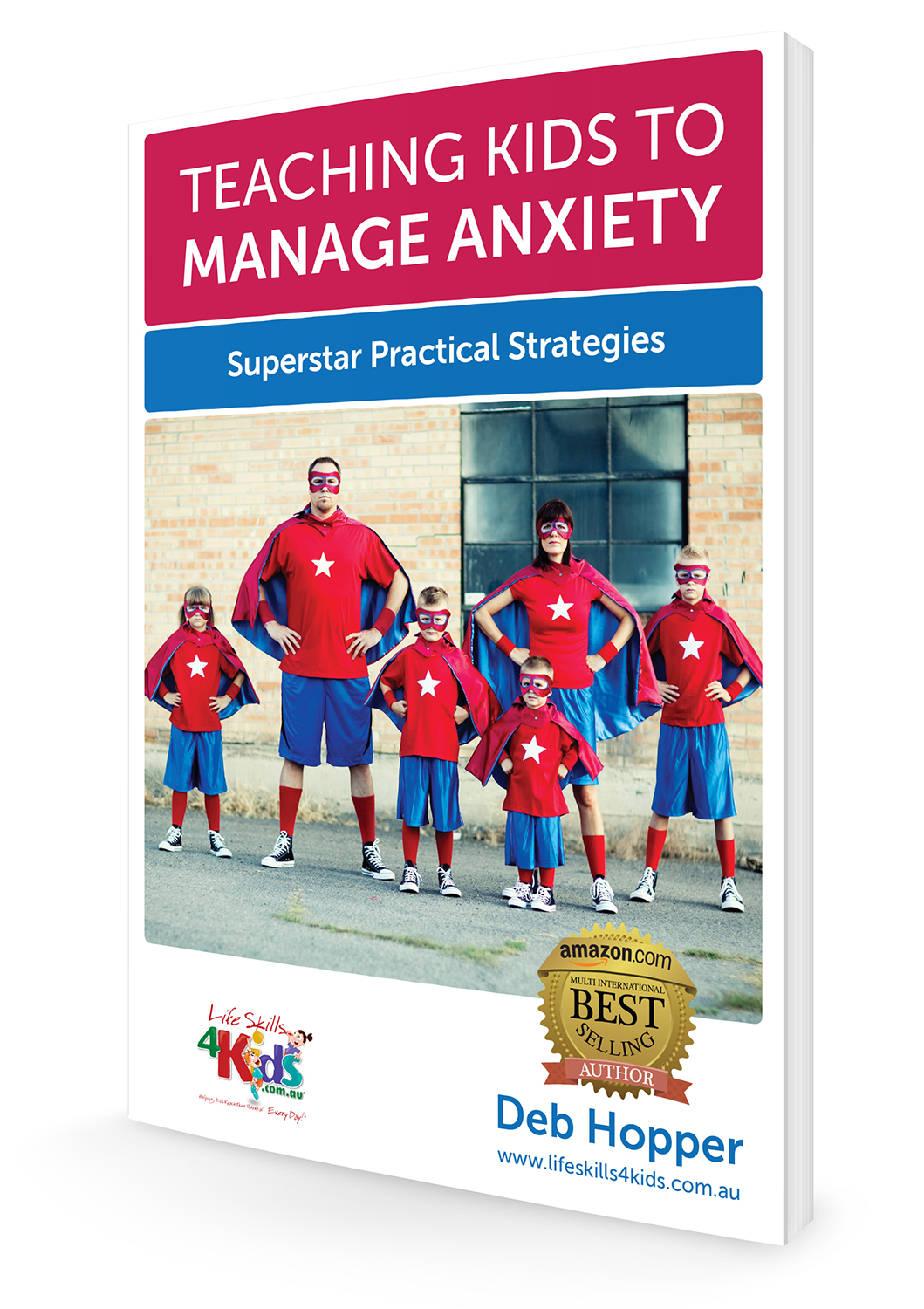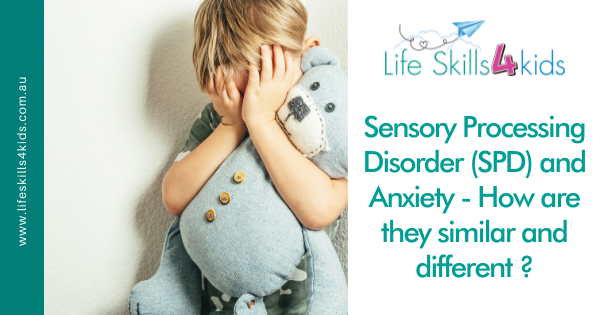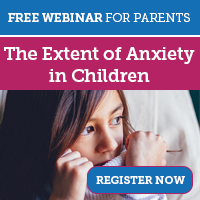Does your child (or the children you work with) have Sensory Processing Disorder (SPD)?
Does your child (or the children you work with) have anxiety?
How do you know where a child’s SPD and anxiety begin and end?
Have you noticed that your child’s (or the children you work with) anxiety does not show any signs of improvement, even though you are ‘pushing’ through it together?
How are SPD and Anxiety similar? How are they different? As a parent or professional, how can you help?
These are all valid questions and the information available can be a confusing mixture for you to try and make sense of. Through my years of experience with kids who have SPD and anxiety, I’ve written this article to help all parents who have kids struggling with these issues.
How is Sensory Processing Disorder (SPD) and Anxiety Linked?
There are many times, as an Occupational Therapist (OT), that I am asked to work with kids who have anxiety and it turns out that these kids have SPD. Anxiety and SPD go hand in hand and initially SPD is often missed, whereas anxiety is not.
As a parent or professional, how will you know whether a child has SPD, anxiety or both?
How are SPD and Anxiety similar?
Not every child with Anxiety has SPD and not every child with SPD has anxiety, but a large proportion do.
SPD can cause your child to feel overwhelmed. They might have anxiety about situations that trigger their sensitivities, like noise or new foods. They might wake up angry because they have to put on clothes. They might worry about crowds and travelling on buses with other people.
Equally, your child may experience anxiety. They might have paralysing social anxiety, which prevents them from dealing with crowds and provokes a fear of not doing anything right, or have panic attacks or specific phobias. Your child may also experience Obsessive Compulsive Disorder (OCD). As you can see, there are many different types of anxiety that could be experienced.
SPD and anxiety will cause similar symptoms which could include:
- shaking, trembling, rigid posture
- dilated pupils
- stomach cramps, vomiting, diarrhoea
- excessive sweating
- disorientation, dizziness
- poor balance and coordination
- flushed face
- racing thoughts
- sleep problems
- shortness of breath
- heart palpitations
How are SPD and Anxiety different?
So far, it seems quite difficult to work out whether a child has SPD or anxiety, as they both have very similar signs and symptoms.
The main difference between SPD anxiety and other types of anxiety is that with SPD, it doesn’t matter how many times you work through the trigger for this anxiety, your child will still not cope with it and will continue to display the same symptoms. This is because kids with SPD do not have the ability to habituate (become accustomed to) new information. Kids with SPD like routine and predictability and sensory stimuli is often neither of those things. A lot of sensory stimuli is random and unusual and anxiety is often the result of this.
If your child experiences regular anxiety, you can work on helping them with getting used to the situation that causes that anxiety and eventually acclimatise them to the particular trigger. Anxiety can be overcome by gentle exposure to the trigger that causes it – you can help your child work through this. Have a look at our articles about Helping Kids with Social Anxiety, Managing Anxiety and Helping Kids with Emotional Anxiety
What does Sensory Anxiety feel like?
Let’s take a look at sensory anxiety. This article is written by a person who has SPD and provides us with an insight into what sensory anxiety actually feels like. The author mentions the chaos of SPD and anxiety together and provides some useful methods for relieving anxiety when it’s related to sensory issues:
- Make it known: Tell people around you that you have sensory issues. Explain specifically what you struggle with (noise, physical contact, need for fidgeting). When more people are aware of it, the more likely your surroundings will be a sensory-safe space, which will reduce your anxiety.
- Alternatives and Avoidance: I tell people this all the time, and I’m saying it again. It’s very much ok to avoid the anxiety-producing event all together.
- Gear up: Sometimes, you have to swim with sharks. The best thing to do is to prepare your physical and emotional state for this encounter. Some sensory anxiety can’t be avoided, and when that happens, gear up your sensory self in the ways that work for you. Maybe you need to jump on a trampoline, or use a Wilbarger brush, or use a fidget. Allow yourself time to do what you need to ahead of time.
- Make time to bounce back: In the event that you did have to swim with a shark, and there was no time to prepare beforehand, it’s necessary to dedicate time and energy to letting your sensory anxiety calm down afterward. Just like preparing beforehand, it’s crucial to give yourself time to bounce back after.
What can you do to help?
As a parent, how can you help your child who has SPD and anxiety? The key to helping them is in finding ways to use the above four methods to enable them to reduce their anxiety due to sensory issues.
- Explain to people specifically what your child struggles with because of their sensory issues. That way other parents and people that your child comes into contact with will be able to modify the environment accordingly.
- Give yourself and your child permission to avoid the anxiety-producing events all together.
- If you have to take your child to an anxiety-provoking environment, be prepared! Remember, to pack a bag of fidget toys or things that you know will keep your child as calm as possible; provide adequate warning for your child, this could be through visual clues and talking about what will happen before it happens; invest in ear defenders or a weighted vest if they are required – you know your child and you know what will work for them.
- Spend time making sure that you have things in place after the event that will help your child (and you!) to recover. It is vital to provide a safe space for both your child and yourself so that you can deal with the situation that happened and recover from it.
Want more information and help?
Register for my FREE webinar on Understanding the Extent of Anxiety in Children.
Teaching Kids to Manage Anxiety: Superstar Practical Strategies (eBook)
Kids today are growing up in a fast-paced world where information and opportunity overload can be overwhelming.
Based on many years of clinical experience as an Occupational Therapist, Deb Hopper has been using her Just Right Kids® Model to teach children to communicate and manage their stress and anxiety by:
– Identifying their “body speed”,
– Understanding their stress triggers, and
– Implementing simple strategies to reduce anxiety and stress.



